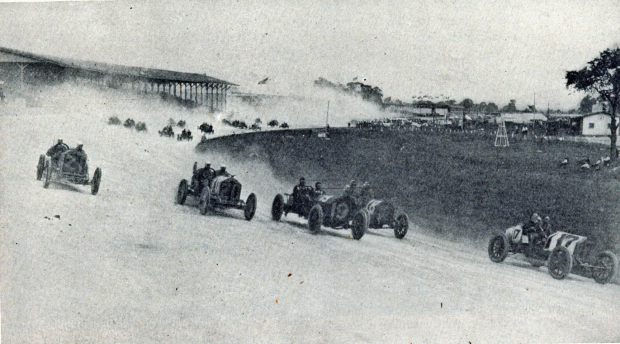Huffington Post: “The Indy 500 Celebrates Its 100th Year”

Kate Kelly has written an article The Indy 500 Celebrates Its 100th Year in the Huffington Post relating the Indy 500 Races with the Vanderbilt Cup Races. Highlights are below:
The Indy 500 Celebrates Its 100th Year
By Kate Kelly of the Huffington Post
The auto race known as the Indy 500 will celebrate its 100th anniversary on May 30, 2011. When you consider that Henry Ford did not even introduce the Model T until 1908, it does pique one's curiosity about automobile racing and Indianapolis in 1911.
Automobile racing was becoming very popular in Europe at the turn of the century, and as the idea gravitated to the United States, the interested parties fell into two camps: Car manufacturers who were eager to showcase their creations to what was primarily a non-driving public, and wealthy men who saw automobile racing as an exciting new adventure.
Early auto races in this country were either held on horse racing tracks or on streets. Point-to-point street racing, as it was known, moved to the "official race" category when William K. Vanderbilt Jr. put up prize money in 1903 for what became known as the Vanderbilt Cup. That first race, to be held on October 8, was to cover a 30.24-mile course on winding dirt roads in Nassau County, Long Island.
A huge public outcry about safety followed Vanderbilt's announcement. The race went ahead as planned, but soon after, Vanderbilt responded to the public concern about safety by forming a company to build a motor parkway that would be one of the country's first modern paved parkways. He intended it to be used for the race but he noted that building the Long Island Motor Parkway, stretching from Queens to Lake Ronkonkoma, would also open up Long Island for economic development.
Construction on the parkway began in 1907 and by 1908 parts of the motorway could be used for the Vanderbilt Cup race that year. The race got another popularity boost when a local man from Garden City was the winner; the driver averaged 64.3 miles per hour, the fastest speed on record for a street race up to that time.
Safety was still a major issue in the public's mind so in 1910 manufacturers formed a Manufacturers' Contest Association to oversee point-to-point street competitions as well as those run on race tracks. As The New York Times put it (10-16-1910), [it will...] "put racing on a basis that will protect the public, which pays money to witness the contests, and also protect contestants, who pay entrance fees, by seeing that all rules are rigidly enforced."
So it was into this climate that four Indianapolis businessmen decided their city needed a raceway. Led by Carl G. Fisher and three other investors, James Allison, Arthur Newby and Frank Wheeler, the building of the Indianapolis Motor Speedway got underway.
At that time, the car manufacturers were the ones who put up the cars they wanted to race, and author Charles Leerhsen, author of Blood and Smoke: A True Tale of Mystery, Mayhem and the Birth of the Indy 500, said in a phone interview that even before the race began there were some oddities about the requirements for the qualifying cars.
Customarily, race cars at that time had space for a driver and a mechanic; the responsibilities of the mechanic were to add oil as needed and to keep a look out for other cars on the track. The representatives entering the Marmon, a car manufactured in Indianapolis, received permission to remove the mechanic's seat to make the car lighter and faster. When others protested that it would be unsafe not to have a mechanic to watch out for traffic, driver Ray Harroun, took the car back into the garage and soon emerged with a mirror affixed to the dashboard, thereby inventing the first rearview mirror used for an automobile. (Harroun credited the idea for his invention to a horse-drawn buggy he had seen with a rearview mirror.)
According to Charles Leerhsen, Marmon also was the only manufacturer permitted to choose its own entry number. The automobile the company entered was called the Marmon Wasp and was a souped-up version of Model 32 in the Marmon line; Marmon wanted spectators to see the Wasp, love the Wasp, and think "32" when they went to the showroom to look at cars.
All signs were that this Memorial Day race was going to be everything the promoters hoped it would be. Sports reporters from all over the country came in to write all types of stories about the area for the week prior to the race, and when the pace car started the 40 qualifying cars, there were 90,000 spectators in the stand.
Links to related posts on VanderbiltCupRaces.com

Comments